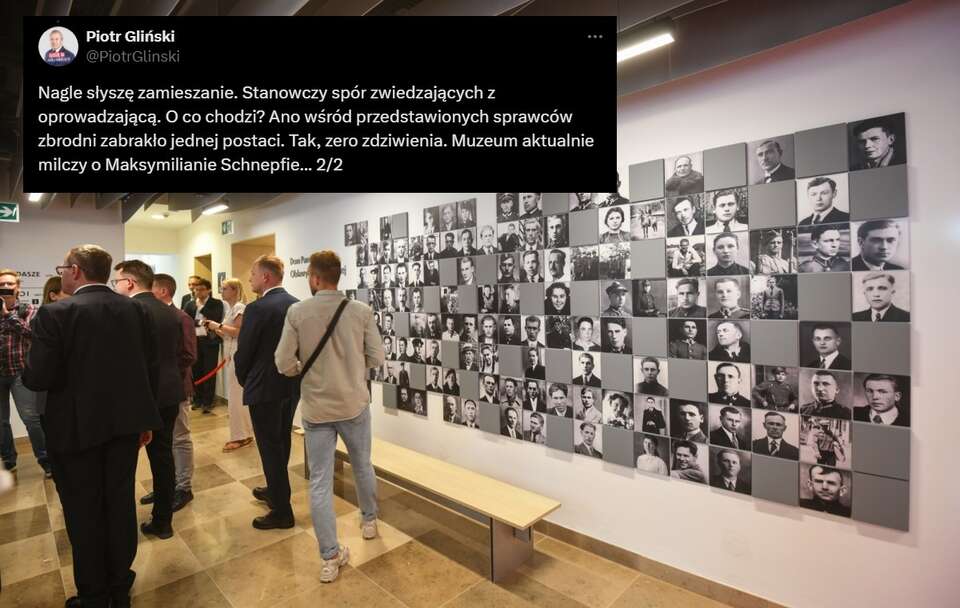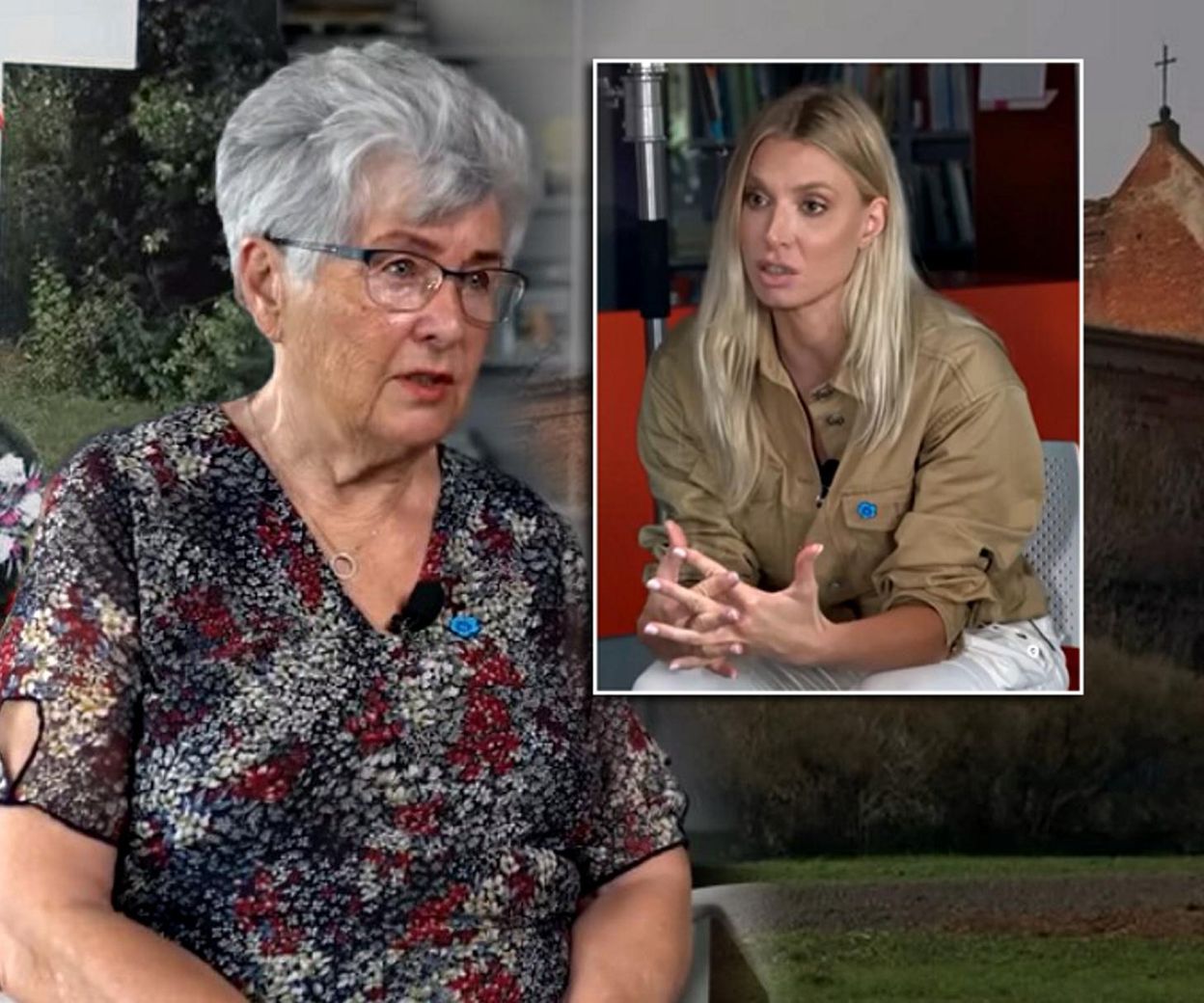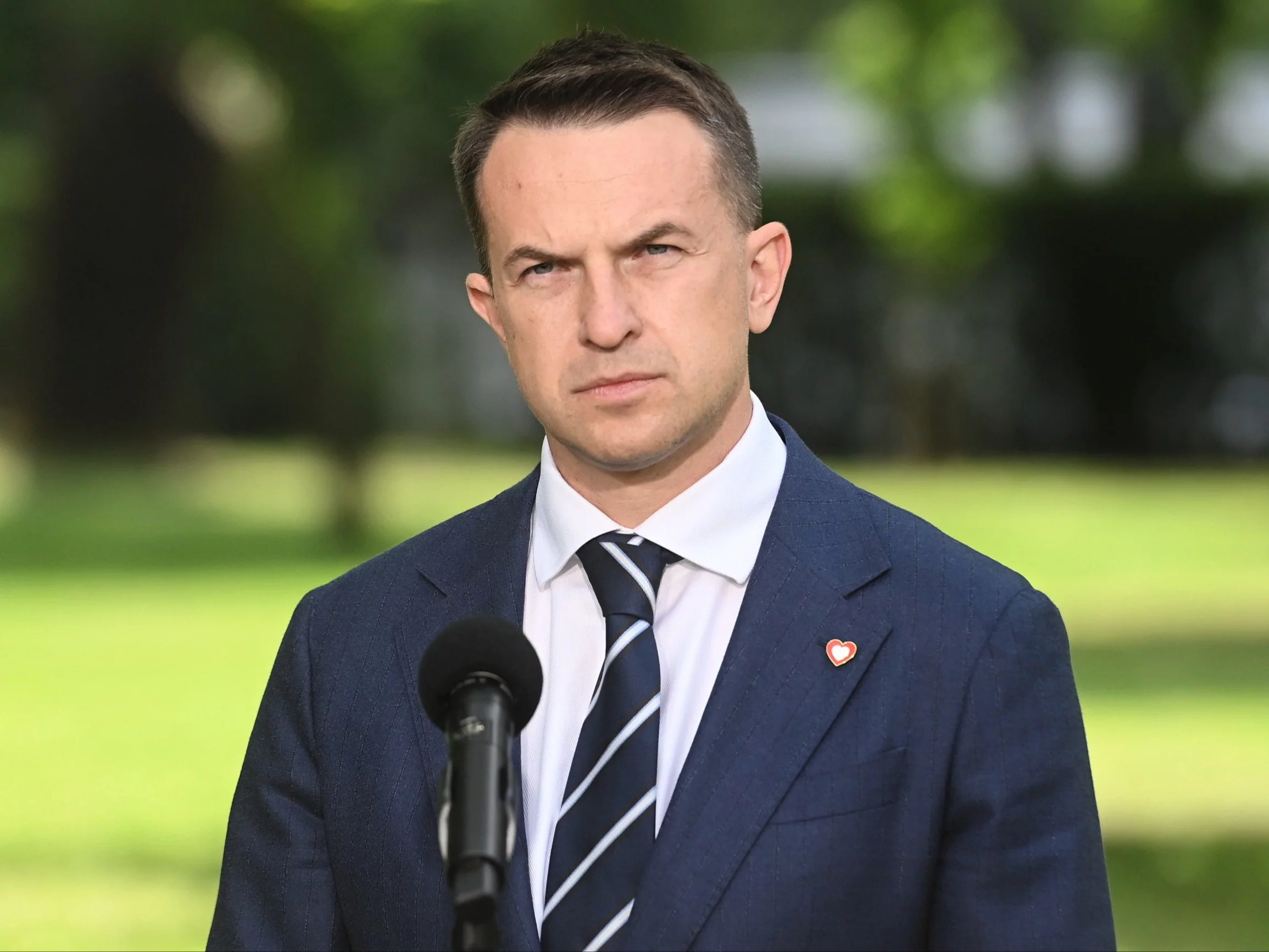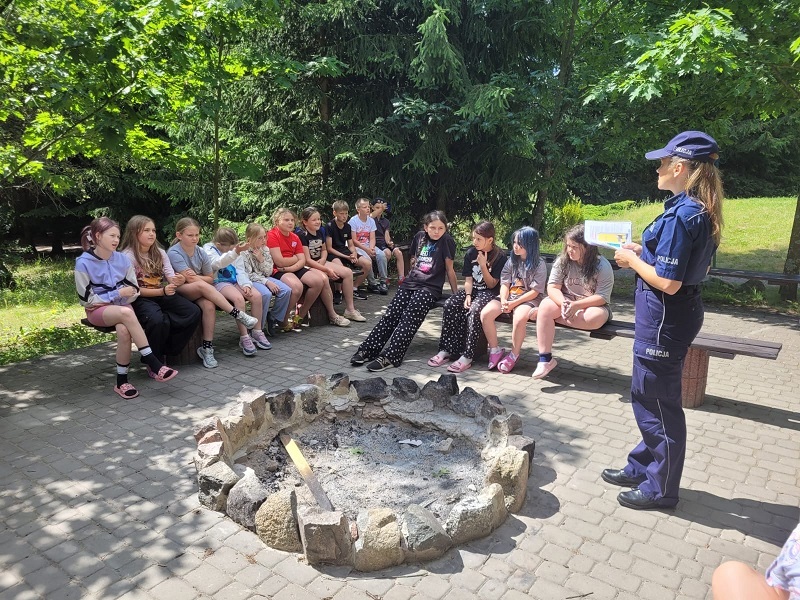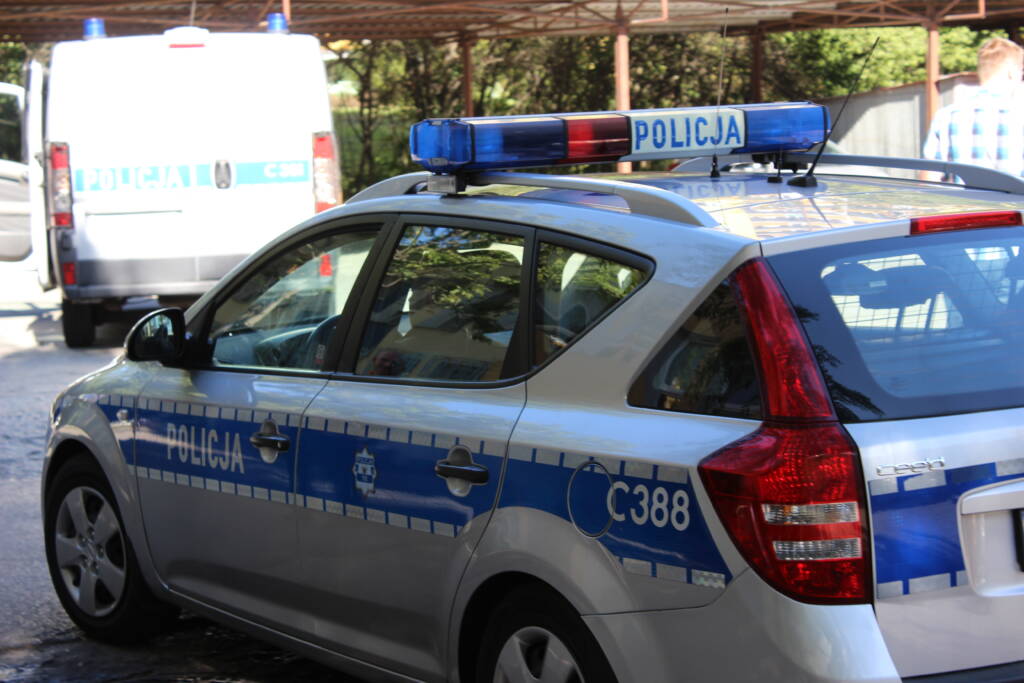Piotr Uklański's “Flowers of Evil” talk about the problem of stealing cultural goods, but besides about our memory. The banal message is that Piotr Uklański can surprise. He did this many times, painting abstract paintings whose titles appealed to the Warsaw Uprising, setting up soldiers so that those photographed from a advanced tallness would make the image of John Paul II, shooting in the outdoors of the Jura Krakowsko-Częstochowska "Summer Love", the first Polish western starring Katarzyna Figura, Val Kilmer and Bogusław Linda, or researching oriental portraits in Western art from the 15th to 20th century.
 Piotr Uklański, ‘Robbered (Rural landscape, autumn yields)’, oil on canvas, 16 x 20 inches (40.6 x 50.8 cm), 2024
Piotr Uklański, ‘Robbered (Rural landscape, autumn yields)’, oil on canvas, 16 x 20 inches (40.6 x 50.8 cm), 2024Photo by Marek Gardulski, Archive of the Foksal Gallery Foundation
The exhibition “Flowers of Evil” at the Foksal Gallery Foundation could besides surprise. She was in 2 rooms. The first 1 on the walls had paintings hanging. In different styles: from impressionism and its various derivatives to surrealism and la pittura metafisica Giorgio de Chirico. At the same time, they were simple, trivial images depicting dead natures. akin to what could have been found in many bourgeois homes in the first half of the 20th century. The second area was possibly even more astonishing. This time, canvases were placed on metallic poles spread all over space. Entering first saw the image retreats. What was painted on them was only visible after crossing to the another side of the room. And again, they were dead natures.
 Piotr Uklański, ‘The Robbed 1 (Bocket of Anemons in a Vase, background with oriental pattern)’, oil on canvas, 28 x 22 inches (71.1 x 55.9 cm), 2024
Piotr Uklański, ‘The Robbed 1 (Bocket of Anemons in a Vase, background with oriental pattern)’, oil on canvas, 28 x 22 inches (71.1 x 55.9 cm), 2024Photo by Marek Gardulski, Archive of the Foksal Gallery Foundation
The stylistic diversity of these works was fascinating. Piotr Uklański one more time showed that he could not only usage very different media – from film, photography, fabric to painting – but besides play with different artistic traditions or streams. At the same time, 1 could get the impression that these paintings were made by those who had only continued and even reproduced what others had introduced to the play.
However – contrary to appearances – it was not an exhibition about painting. Its title explicitly referred to Charles Baudelaire’s celebrated volume. In the accompanying text, even a fragment of the poem beginning this collection was quoted in the translation by Jan Opęchowski:
‘If rape, poison, dagger and fire
They haven't covered them yet.
Our fates of banal canals are powerless
Blame it, for the soul besides in boldness poor.”
"To the reader", as Jan Tomkowski wrote, is simply a peculiar "invocation" addressed by... a demon. And it's a poem about man's ability to do evil.
Even more crucial was the second quote quoted in the same text about the exhibition. “I full admit that I had a passion for collecting things. And if they were to be confiscated, I wanted to have a tiny part in it," said Hermann Göring, Marshal of the Reich in the trial before the Nuremberg Tribunal. His words afraid the robbery of works of art by the 3rd Reich, in which he played a peculiar role.
Piotr Uklański in “Flowers of Evil” returned to the large Nazi plunder. He reached out to the “Report on the losses suffered by Poland as a consequence of German aggression and business during planet War II, 1939–1945”, which collected information about missing works of art. On the basis of this, the paintings presented in the exhibition were created, which is emphasized by their titles: "The Robbed 1 (Buket of Anemons in a Vase, background with an oriental pattern" or "The Robbed 1 (On the Table, a bouquet of red flowers in a blue vase)". But not only did they matter.


The way of the exhibition is not only a game with the recipient, a way to make a surprise effect, but it is crucial for this exhibition. You can seldom see the reverse of the image – it is crucial to its lico. Not only due to the fact that in the case of any artists, like Andrzej Wróblewski, they hide another paintings, then utilized by the artist to make fresh works.
Their communicative is written on the reverse. Information about who the painting belonged to, at which exhibitions it was exhibited. About galleries, antiques, or auction houses where it was sold. Finally, on the back, museums place their inventory numbers, information about the place of retention or transport of works. And the “Flowers of Evil” of the Uklan past are about works of art.
At the same time, the exhibition is part of Polish debates on identity. The artist has been taking care of her for a long time. The exhibition “Polonia” organized in the Parisian Perrotin Gallery in 2005 and later by 3 years “White-Red” in the fresh York City Gagosian Gallery were pushy manifestations of Polishness. The artist referred to fundamental issues: national identity, tragic Polish history, religion. 1 could see a immense white eagle, large plates of white and red glass stacked into the Polish flag, paintings in which red flows into the white background. Each of the works devoted to 1 of the capital districts in which the battles were fought in 1944. In his works he began to play with haughtiness and irony, with pathos and banal. At the same time, he weakened the clarity of his earlier work, with the celebrated “Nazis” at the head. It could be read in many different ways.

Piotr Uklański besides took part in the competition for the exhibition task for the Polish Pavilion at the Venice global Biennial of Art in 2017. The description of this exhibition is accompanied by "Artist Statement“ The Polish society that was at the crossroads must urgently find answers to the most fundamental questions: Who precisely are Poles? Where are we going (as a nation)? What shapes our sense of identity, history, collective goals?" And he called for a extremist reinterpretation of Poland's past since the outbreak of planet War II, The Holocaust, Volyn massacre and Warsaw Uprising after the circular Table agreement and Smolensk disaster.
The presentation in Venice was unsuccessful, but in 2018 his exhibition “Poland” was shown at the National Museum in Krakow, where he created a communicative about our country where he reconciled traditions, stories, memories. There was a place for uprisings, ending myths, the Second Polish Republic, the drama of the Second War and the times of the People's Poland. "Flowers of Evil" is another effort to deal with Polish history.
In 2021 Marcin Maciejowski painted the painting "Rafael brush Maciejowski". He recreated the “Portrait of a Young Man” from the collection of the Museum of Czartoryski Dukes, the most valuable of the stolen and yet undiscovered works. It became an emblematic example of Polish losses. It will proceed to be recalled, reproduced. And at the same time, the inactive preserved photograph only gives an approximate look.

Marcin Maciejowski, replicating the work attributed to Rafael, placed on the margin the alleged colour calibration bar – tiny colored squares corresponding to CMYK colours and tints of grey, allowing for accurate reproduction of colors. As if he wanted to emphasize that all we see is simply a repetition of the work, not its original. And that's all we can get today.
Piotr Uklański made a different choice. He reached for works of small known, frequently known only from descriptions, due to the fact that inactive no photographs of them have been preserved. It is adequate to callback their descriptions: “Maku flowers, impressionist brush strokes” or “Natural-sized bouquet of roses against the background with oriental pattern, vivid colors”. There are many objects in the war failure directory, after which only residual information remains. Today, it is impossible to even about reproduce what they looked like.
Marcin Maciejowski's canvas bears the subtitle “The Impression of Ownership”. Peter Uklański's paintings are besides simply traces of the works, their “proofs”. He explained: “For me the question of restitution is simply a utopia bordering on fantasymagoria. Restitution is more emotional than physical. It is not just the Nazis or the Stalinists; Napoleon and all the another imperialists utilized the same forms of confiscation as cultural rape. I wanted to pass on a series of universalism in an effort to return to lost images, which no images have preserved – only fragmentary descriptions. Restitution is simply a state of mind.”
At the same time, the exhibition at the Foksal Gallery Foundation entered the Polish political debate. War losses have long been 1 of the key themes – and war reparations from Germany were 1 of the key themes for the ruling camp in 2015-2023, but not only. As highlighted in the text accompanying “Flowers of Evil”, the failure and problem of redress “still play an crucial function in Polish national policy, in which both right-wing and centre parties instrumentalize this collective fantasy of reparation and redistribution for their own political benefit”. However, this is only 1 aspect of the lost cultural goods.
The same text states: “For the Nazis, plunder was another tool of terror.” It's worth highlighting. Yes, not only did the 3rd Reich rob works of art, but in her case it became peculiarly important. Not just due to its systematicity and scale.
One origin of inspiration for Piotr Uklański was the text by Janet Flanner “The Beautiful Spoils“ published in 1947 in The fresh Yorker. It writes about the activities of E.R.R. – Einsatzstab Reichsleiter Rosenberg für die Besetzten Gebiete, a task force under Alfred Rosenberg, active in the plunder of cultural goods in occupied territories. From the spring of 1941 to July 1944, 4174 crates of art were removed from France, which included 21,903 objects confiscated from 203 collections belonging to Jews, including 5009 objects from the Rothschild collections, 1202 from the Alphonse Kann collection, 2687 from David-Weilla and 989 belonging to Moïse Lévy de Benzion.
To this day, the scale, but besides the systematic nature of E.R.R.'s actions and the item of records of robbed works, frequently by the most prominent artists, strikes. At the same time, it is only part of the German robbery. To this day, we do not have accurate lists of objects robbed in Poland by its judaic (but not only) citizens. Like the 1 who was owned or destroyed during the Warsaw Uprising, and especially after its fall, erstwhile Germans systematically erased the abandoned city. However, above all, this large robbery did not begin on September 1, 1939, but in 1933, after Hitler came to power.
After the fall of the 3rd Reich, the process of recovering stolen works began. In the first postwar years thousands of them returned to legitimate owners: public collections and private collections. The article by Janet Flanner illustrates the photo-symbol: Karol Estreicher showing soldiers on the platform "Lady with a weasel" by Leonardo da Vinci before she was loaded on the train with works of art returning to Poland. However, not only have many works not been found, small has been done about them for decades to come. The change came from the fall of the east bloc. Since the 1990s, the destiny of the looted works has been again addressed, not only by Germany, but besides by the USSR.
In 1998 the alleged principles of the Washington Conference were adopted – besides signed by Poland. They recommended investigation into the provenances found in the collections of public works of dubious origin under the account of their fates from 1933 to 1945, as well as those entering the art market, and in the case of uncovering their legitimate owners, uncovering ways to make amends.
Slowly these postulates became good practice (although not everywhere is good with its implementation, as is illustrated by Poland), and as a consequence of their application a number of, frequently very outstanding works were returned. In fact, this process continues to mention only “Roses Under Trees” by Gustav Klimt, donated by the Parisian Musée d’Orsay to the heirs of Nora Stiasna, who was forced by the Nazis in 1938 to sale the painting for nothing, while she herself was deported to a transitional camp in Izbica in 1942 and murdered.
Changes in the approach to cultural goods robbed from 1933 to 1945 besides contributed to the beginning of another discussion: on robbery in colonial times. However, there was yet another effect of the Washington Conference Rules – the beginning of investigation on issues that were almost not undertaken. The past of individual works – for which 1 of crucial sources is these retreats – is besides a past of museums, but especially of individuals. This is simply a collection history, including as Nawojka Cieślińska-Lobkowicz emphasizes in the text “Polish. Jewish. ‘Jewish’, published in the yearbook
“The demolition of Jews. Studies and Materials" – "the merit of judaic patrons and marchers for museum collections in individual countries, as well as for the promotion of modern art and individual artists, and the destiny of judaic collections and collectors before the Nazi and their regulation take over". However, he adds that “for Polish-Jewish collectors and works from their collections there is inactive no place in this narrative.”
Peter Uklański's “Flowers of Evil” is so a communicative about collective trauma, about the fantasy of regaining what no longer exists. About Polish life in the shadow of the past, which Michał Bilewicz wrote about in the "Traumaland" published a fewer months ago. However, you can look at them differently – like a question about the past of works of art. Exemplary – the author of the exhibition himself made a breach and among a number of rather anonymous dead natures put a repetition of 1 of the most crucial war losses of the “Portrait of Angels from Potocki Zamoyska” by Jan Matejka from 1872, but possibly just cut works, behind which there are always single fates, stories. If you look at the problem of the restitution of cultural goods in this perspective, there may be a different story, in which there are inactive many gaps to fill. And that will change how we look at our communicative and who it belongs to.
* Oh, my God * Piotr Uklański Flowers of Evil, Warsaw, Foksal Gallery Foundation, exhibition open from 26.09 to 30.11.2024.

